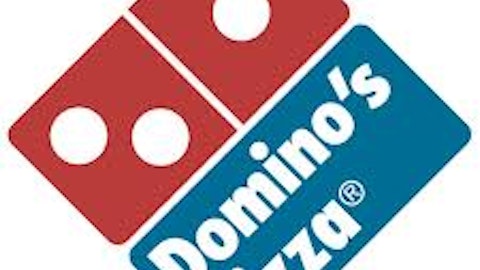It appears that McDonald’s is not wasting money and investors are reaping the benefits from its highly cash-generative operations.
The competition
Yum! Brands, Inc. (NYSE:YUM) is possibly one of McDonald’s closest competitors. However, while the McDonald’s establishments near me are thriving, the KFC recently closed down. Is this an indication that Yum! Brands, Inc. (NYSE:YUM) might not be such a good investment?
| Metric | 2009 | 2010 | 2011 | 2012 |
|---|---|---|---|---|
| Operating Cash Flow | $1.4 | $2 | $2.2 | $2.3 |
| Investing Cash Flow | -$0.7 | -$0.6 | -$1 | -$1 |
| Financing Cash Flow | -$0.5 | -$0.3 | -$1.4 | -$1.7 |
| Free Cash Flow | $0.2 | $0.8 | $0.7 | $0.7 |
| Cash returned to Shareholders (Buybacks and Dividends) | $0.4 | $0.7 | $1.1 | $1.4 |
Figures in $U.S. millions
Yum’s cash flows are significantly smaller than those of McDonald’s, but Yum! Brands, Inc. (NYSE:YUM) is a smaller company.
Like McDonlad’s, Yum! Brands, Inc. (NYSE:YUM)’s spending on investing activities is low, leaving plenty of free cash. Indeed, the company returned 60% of its operating cash flow to shareholders during 2012. Over the past four years, the company has been gradually increasing its cash returns to shareholders, from 28% of operating cash flow during 2009, to 35% during 2010, and 50% during 2011.
Although Yum! Brands, Inc. (NYSE:YUM) is gradually improving shareholder returns, they are still not the same as the highly lucrative returns that McDonald’s offers investors. For example, during 2012, Yum! Brands, Inc. (NYSE:YUM) returned around $1.4 billion to shareholders through both buybacks and dividends, which, as a dollar figure, is much smaller than the amount that McDonald’s returned to shareholders.
That said, during 2012, Yum generated $13.6 billion of revenue, indicating that the company returned roughly 10% of revenue to shareholders. McDonald’s, on the other hand, generated $27.5 billion of revenue during 2012, but returned $5.2 billion to shareholders, or 19% of revenue. Obviously, when considering cash generation and cash return to shareholders, McDonald’s is the clear winner.
The pizza revolution
Another serious competitor to McDonald’s dominance is Domino’s Pizza, Inc. (NYSE:DPZ).
Domino’s Pizza, Inc. (NYSE:DPZ) operates its business through several different corporate entities. The United States-based division of Domino’s is responsible for operations in the U.S. alone. Meanwhile, Domino’s has separate corporate entities in Germany, the UK, and Australia, each responsible for the operation and profits of franchises in their separate regions.
However, in this piece, I will be focusing on Domino’s North American operations, which are controlled by the corporation listed on NYSE.
| Metric | 2009 | 2010 | 2011 | 2012 |
|---|---|---|---|---|
| Operating Cash Flow | $101 | $128 | $153 | $176 |
| Investing Cash Flow | -$32 | -$18 | -$27 | $7.4 |
| Financing Cash Flow | -$70 | -$104 | -$123 | -$177 |
| Free Cash Flow | $78 | $103 | $129 | -$38 |
| Cash returned to Shareholders (Buybacks and Dividends) | $0 | $0 | $130 | $185 |
Figures in $U.S. millions
Domino’s U.S. operations are obviously not as profitable as the global operations of both Yum and McDonald’s. That said, the company has a strong free cash flow and, after deducting investing activities from operating cash flow, the company has plenty of cash available to return to shareholders.
During 2011, the company returned $130 million to shareholders by way of share buybacks. However, this was the first time that Domino’s had returned any cash to shareholders. During 2009 and 2010, the majority of Domino’s financing cash flow was spent on paying off debt, which should lead to improved shareholder returns in the future.
According to Domino’s cash flow statement, 2012 was the company’s first year of paying dividends. The company returned $185 million to shareholders through dividends, which was roughly 11% of the company’s revenue. However, the company produced $176 million in operating cash flow during 2012, meaning that Domino’s returned 105% of its operating cash flow to shareholders in its first year of paying dividends.
Additionally, during 2011, the company repurchased $130 million of stock (85% of operating income). Lastly, I believe that Domino’s has put itself in a strong financial position over the past few years, and shareholders should expect higher returns in the future.
Overall
Overall, for high shareholder returns and a piece of the action, McDonald’s stock has offered the best returns, but Domino’s looks to be the future star, with rising shareholders returns and rapidly growing net income.
The article Fast Food Pays: Who Returns The Most Cash To Shareholders? originally appeared on Fool.com and is written by Rupert Hargreaves.
Copyright © 1995 – 2013 The Motley Fool, LLC. All rights reserved. The Motley Fool has a disclosure policy.
